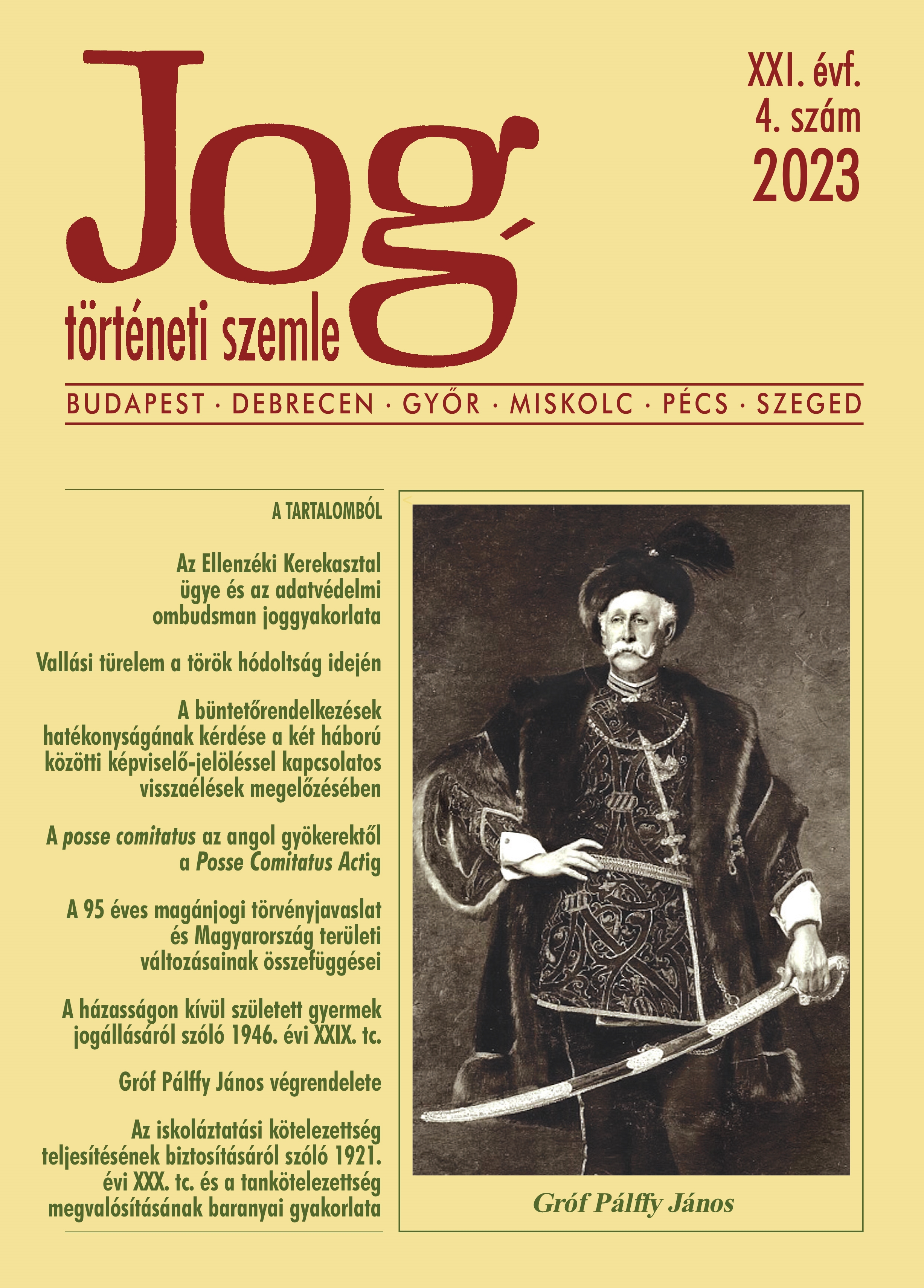A historical overview of the institution of posse comitatus from its English roots to the Posse Comitatus Act
DOI:
https://doi.org/10.55051/JTSZ2023-4p22Abstract
The posse comitatus is an ancient Anglo-Saxon right of the community to take collective action to bring individuals who are disturbing public safety before a lawful body. It was Alfred the Great who put it into legal form. The underlying right to bear arms was indirectly confirmed by the Magna Charta Libertatum through the right of resistance. Stuart absolutism began to abolish it, but the Bill of Rights re-established it as a fundamental right. It is no coincidence that the populations of the emerging North American colonies also resorted to theinstitution of posse comitatus to organise for their own defence, which was also the legal basis for the militias. This was confirmed by the Second Amendment. The posse comitatus has come a long way and, at one stage, was interpreted in both the states under review as an extension of the domestic use of the armed forces. Indeed, in the case of the United States, it was also used to capture fugitive slaves in non-slave-holding states. And then its expanded interpretation, even in the case of post-Civil War consolidation, provided a toolkit for the use of the armed forces for public security. This was ended by Congress in 1878 with the passage of the Posse comitatus Act and the narrowing of the domestic use of the armed forces.






